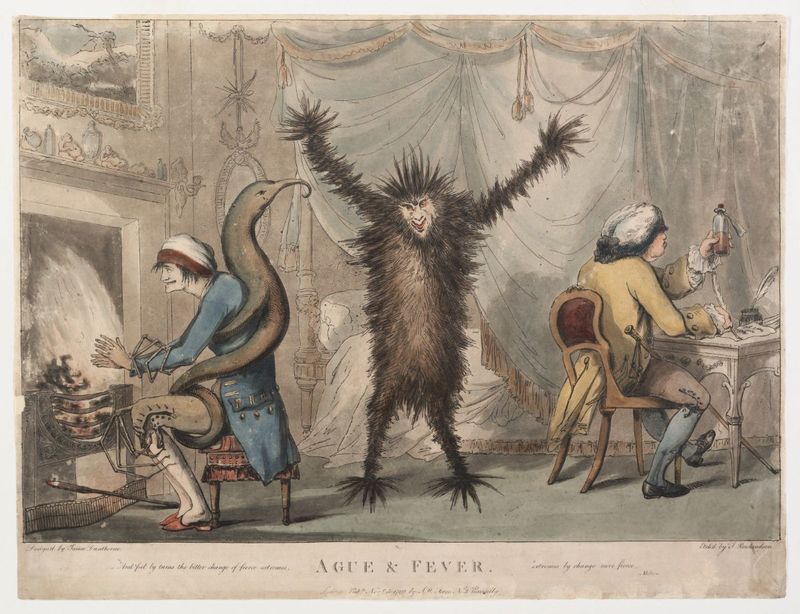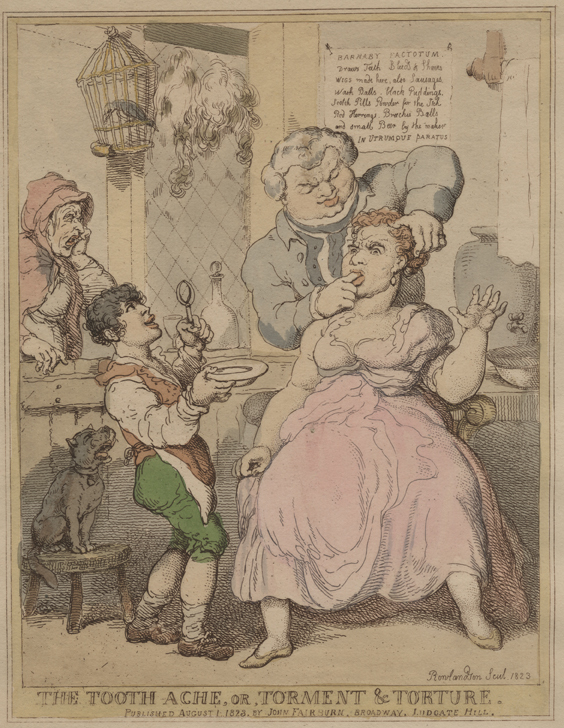Thomas Rowlandson (1756-1827)
Thomas Rowlandson along with James Gillray ushered in the Great Age of English caricature. He was well known for his distinctive, humorous style. A master of pen drawing and watercolor, Rowlandson was a significant influence on many other artists. At the age of 16 he journeyed to Paris to study art, the first of many trips to the Continent. During these visits he created sketches of people and landscapes, which subsequently influenced his work.
He began his career as a professional artist in 1777 and turned to caricature in the early 1780s. In 1789 Rowlandson inherited a large fortune from his aunt which he squandered through extensive gambling. In the late 1790s he began to rebuild his career and established a relationship with the publisher R. Ackermann for whom he illustrated books and created individual prints.
Rowlandson's characters generally display a humorous, light appearance. The backgrounds in his work frequently show the elegant landscapes and structures he encountered throughout his travels. Two hundred years later, Rowlandson's work continues to amuse and delight his audiences.
In this etching, Rowlandson's derision of the medical profession is illustrated by a group of doctors attempting an amputation.
Dropsy, the stout man, is shown courting consumption, the withered woman. Rowlandson contrasts these 19th century figures to the statue of the classical Hercules.
Originally published by Rowlandson in 1788, this print shows Ague, the snake, wrapped around the patient, while Fever, the furry monster, stands behind him. On the right is a physician writing a prescription.
A quote by Milton on the bottom of the print reads, "And fed by turns the bitter change of fierce extremes, extremes by change more fierce."




